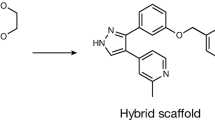Abstract
SEVERAL papers have recently appeared describing substances produced by Bacillus subtilis which exhibit antifungal activity with only incidental antibacterial action. Though the chemical and physical properties of these substances were not thoroughly investigated, it appears that some of them are similar and can be grouped together. Table 1 summarizes the known properties of nine of these antifungal antibiotics. It shows that whenever tested, these substances proved to be extracellular, acidic, non-dialysable and heat-stable polypeptides, not affected by pepsin and trypsin. They are soluble in polar, and insoluble in non-polar, organic solvents. Peptides I, II and III have an acid equivalent weight in the neighbourhood of 1,000, and an acid dissociation constant of about pK = 5.5 ; as acidic polypeptides, they are soluble in alkali and insoluble in water and in dilute acids. Similar solubility properties were found for other substances of this group, as given in Table 1.
This is a preview of subscription content, access via your institution
Access options
Subscribe to this journal
Receive 51 print issues and online access
$199.00 per year
only $3.90 per issue
Buy this article
- Purchase on Springer Link
- Instant access to full article PDF
Prices may be subject to local taxes which are calculated during checkout
Similar content being viewed by others
References
Babad, J., Pinsky, A., Turner-Graff, R., and Sharon, N., Nature, 170, 618 (1952). Babad, J., et al. (submitted for publication).
Cercós, A. P., Rev. Invest. Agric., 4, 325 (1950). Cercós, A. P., and Castronovo, A., Ann. Soc. Cient. Argentina, 152, 68 (1951).
Hobby, G. L., Regna, P. P., Dougherty, N., and Steig, W., J. Clin. Invest., 28, 927 (1949). Regna, P. P., Carboni, R. A., and Steig, W., Amer. Chem. Soc. meeting in miniature, Brooklyn, N.Y., March 17, 1950, cited from Ann. Rev. Biochem., 20, 390 (1951).
Johnson, E. A., and Burdon, K. L., J. Bact., 51, 591 (1946).
Landy, M., Warren, G. H., Rosenman, S. B., and Colio, L. G., Proc. Soc. Exp. Biol. Med., 67, 539 (1948). Tint, H., and Reiss, W., J. Biol. Chem., 190, 133 (1951).
Michener, H. D., and Snell, N., Arch. Biochem., 22, 208 (1949).
Nandi, P., and Sen, G. P., Nature, 172, 871 (1953).
Raubitschek, F., and Dostrowsky, A., Dermatologica, 100, 45 (1950).
Shibazaki, I., and Terui, G., J. Ferment. Tech. (Japan), 21, 339 (1953); cited from Chem. Abstr., 48, 2832 (1954).
Stessel, G. J., Leben, C., and Keitt, G. W., Phytopath., 43, 23 (1953).
Walton, R. B., and Woodruff, H. B., J. Clin. Invest., 28, 924 (1949).
Author information
Authors and Affiliations
Rights and permissions
About this article
Cite this article
SHARON, N., PINSKY, A., TURNER-GRAFF, R. et al. Classification of the Antifungal Antibiotics from Bacillus subtilis . Nature 174, 1190–1191 (1954). https://doi.org/10.1038/1741190a0
Issue Date:
DOI: https://doi.org/10.1038/1741190a0
This article is cited by
-
Production of a potentially novel anti-microbial substance by Bacillus polymyxa
World Journal of Microbiology & Biotechnology (1993)
-
Antagonismusin vitro vonBacillus spp. gegenüberRhizoctonia solani undPythium spp.
Anzeiger für Schädlingskunde Pflanzenschutz Umweltschutz (1993)
-
Three antifungal polypeptides fromBacillus subtilis
Experientia (1964)
-
Mycobacillin, a New Antifungal Antibiotic produced by B. subtilis
Nature (1958)
Comments
By submitting a comment you agree to abide by our Terms and Community Guidelines. If you find something abusive or that does not comply with our terms or guidelines please flag it as inappropriate.



